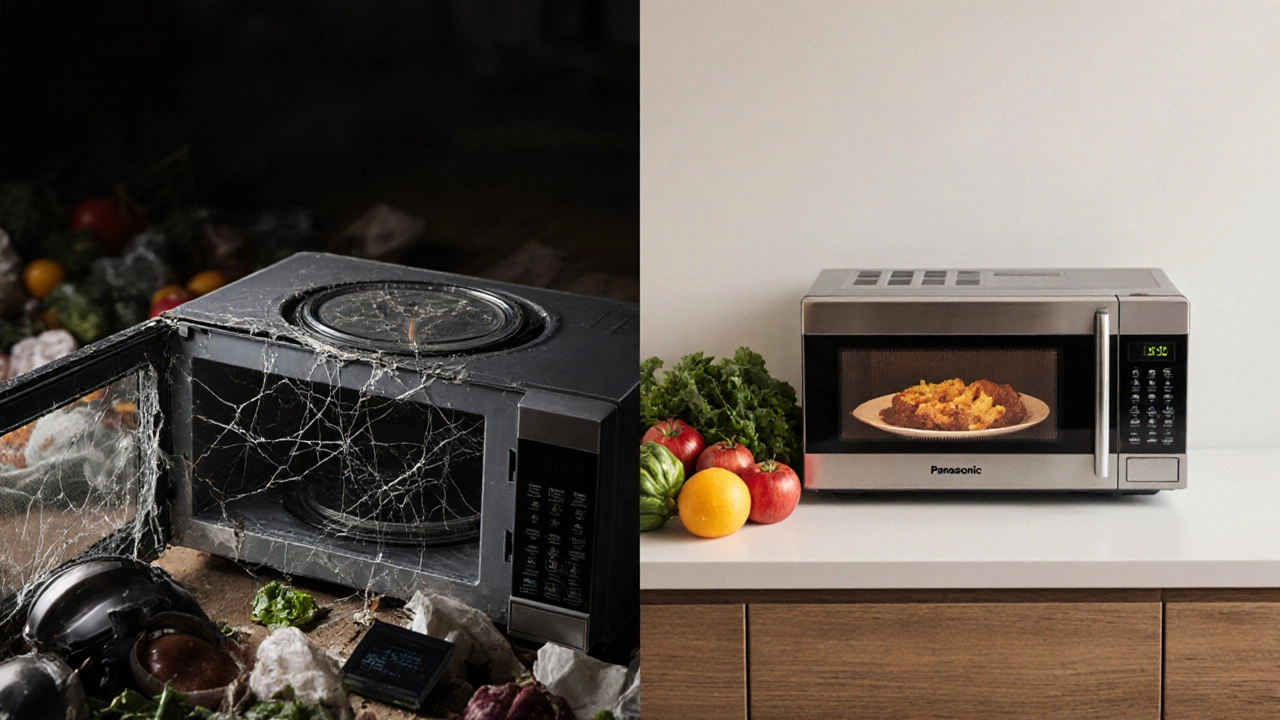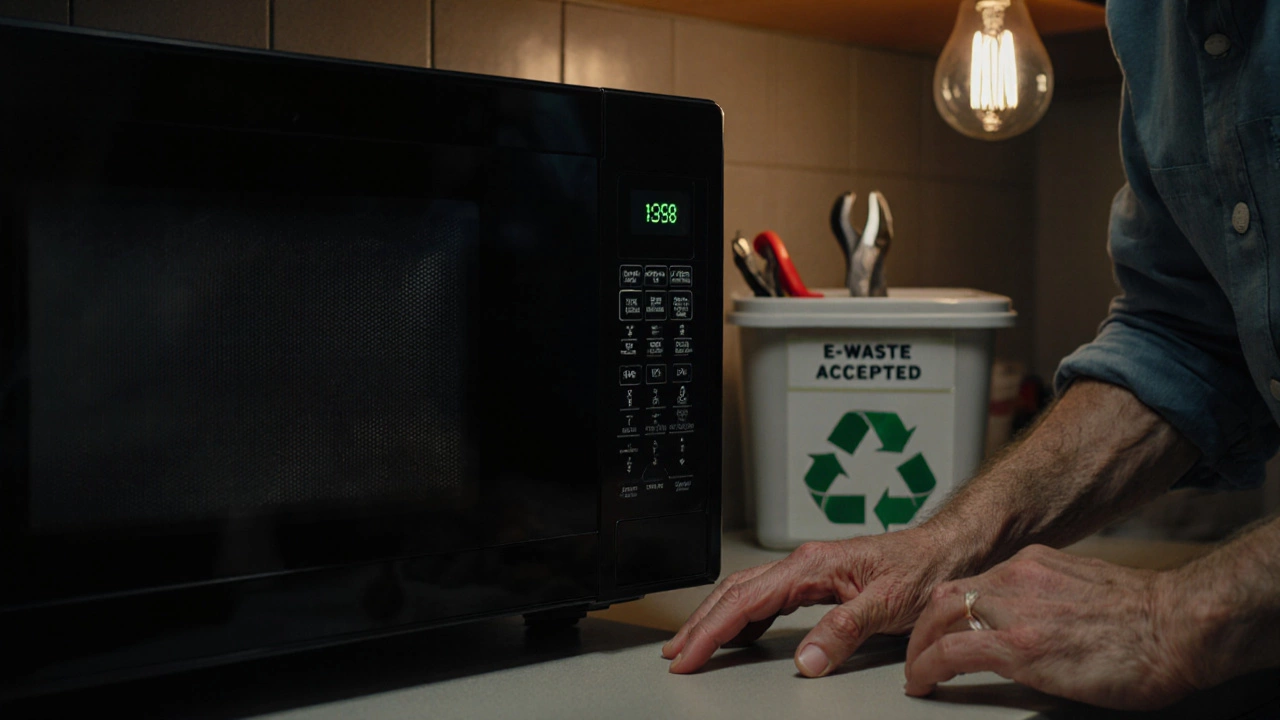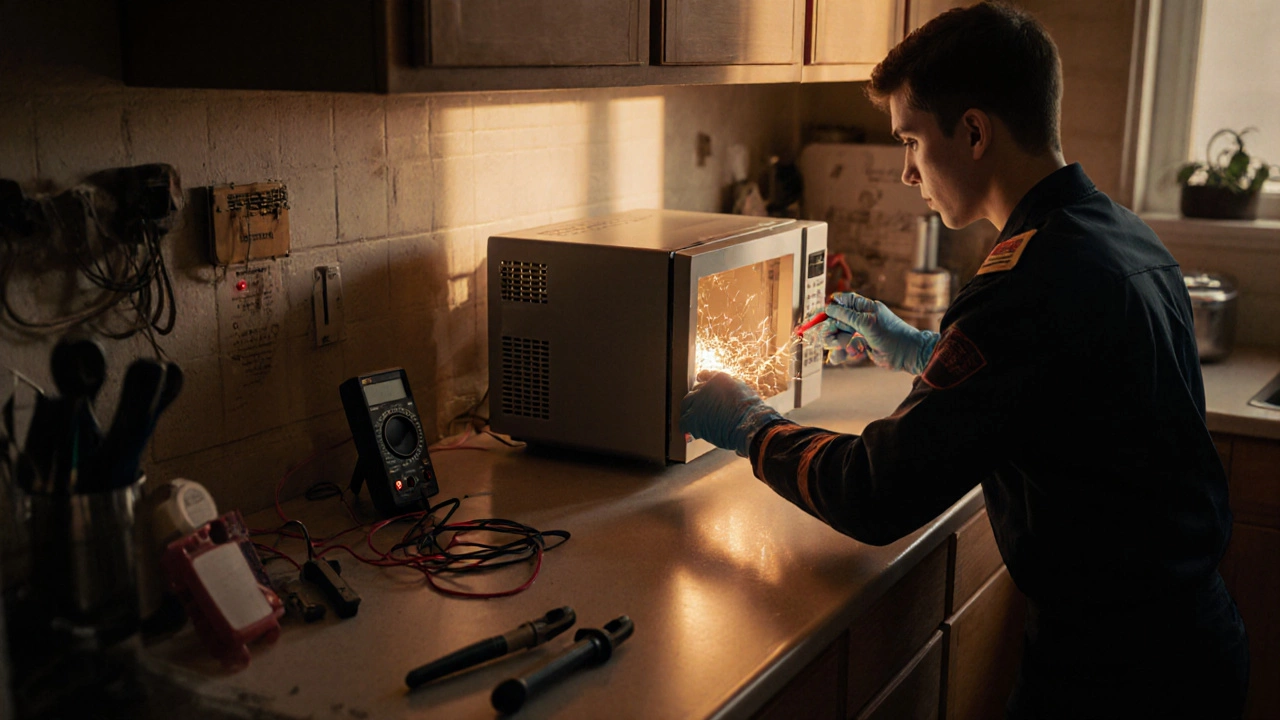Microwave Repair Calculator
Is your microwave worth repairing?
Use this tool to decide whether repairing or replacing your microwave makes the most sense based on age, repair costs, and replacement prices.
Enter values above to see your recommendation.
You’re standing in your kitchen, staring at your microwave. It’s making that weird buzzing sound again. The turntable won’t spin. Or maybe it just won’t heat anything anymore. You sigh. Do you toss it? Or try to fix it? The question isn’t just about money-it’s about time, waste, and whether your old appliance still has life left in it.
How old is your microwave?
Microwaves don’t last forever. Most last between 7 and 10 years. If yours is 5 years old or newer, repair is often worth considering. If it’s 10 or older, you’re pushing past its expected lifespan. That doesn’t mean it’s broken forever-but it does mean other parts are more likely to fail soon after you fix the current issue.
Here’s the hard truth: a 12-year-old microwave is like a 100,000-mile car. It’s worked hard. It’s had its moments. Replacing a magnetron or high-voltage diode might get it running again, but you’re gambling on the next breakdown being the last one you’re willing to pay for.
What’s the repair cost vs. replacement cost?
Let’s talk numbers. A basic new microwave costs between $80 and $150 in New Zealand. A mid-range model with inverter tech or smart features runs $200-$300. Now, what does a repair cost?
Most appliance technicians charge $80-$120 just to come out and diagnose the problem. If it’s a simple fix-like a broken door switch or a faulty turntable motor-you might pay $150-$200 total. But if the magnetron (the part that actually generates microwaves) is dead? That’s $150-$250 for the part alone, plus labor. You’re suddenly spending more than a new microwave.
There’s one exception: if your microwave is a high-end model, like a Panasonic or Sharp with built-in sensors, convection cooking, or a stainless steel finish, replacement costs $300+. In that case, repair might make financial sense-especially if the unit is under 8 years old.
What’s actually breakable-and fixable?
Not all microwave problems are created equal. Some are easy to fix. Others? Not so much.
- Turntable not spinning? Usually just a worn-out motor or roller guide. Easy fix. Cost: $30-$60.
- Door won’t close or latch? Could be a broken door switch or hinge. Common issue. Cost: $80-$150.
- Sparks or arcing inside? Might be a damaged waveguide cover (the mica sheet inside). Cheap fix. Cost: $50-$100.
- Nothing powers on? Could be a blown fuse, faulty control board, or tripped thermal cut-off. Harder to diagnose. Cost: $120-$200.
- Heats slowly or not at all? Usually the magnetron or high-voltage diode. Expensive. Cost: $200-$300+
Here’s the rule of thumb: if the repair cost is less than half the price of a new microwave, and the unit is under 8 years old, go for it. If it’s more than half? Walk away.

Is it safe to repair a microwave?
Let’s be clear: microwaves are not like toasters. They store high-voltage electricity-even when unplugged. The capacitor inside can hold a lethal charge for days. That’s why you should never attempt to open the casing yourself unless you’re a certified technician.
Even experienced DIYers have been hospitalized trying to fix microwaves. I’ve seen it. A guy in Porirua tried replacing a door switch and got shocked so hard he needed an ambulance. He lived-but he lost three months of work.
Always hire a licensed appliance repairer. They have the tools, training, and discharge procedures to keep you safe. And yes, they’re worth the call-out fee.
What about environmental impact?
Every microwave you throw out adds to e-waste. New Zealand sends over 3,000 tonnes of e-waste to landfill each year. Microwaves contain metals, plastics, and circuit boards that don’t break down. Recycling them properly takes effort-and most people don’t bother.
If your microwave is repairable, fixing it is the greener choice. But if it’s 10+ years old, and the repair costs more than $200, buying a new one from a brand that offers recycling programs (like LG or Samsung) might be the more responsible move. Many retailers take back old units for free when you buy new.

When should you just replace it?
Here’s a simple checklist. If any of these apply, skip the repair:
- The microwave is 10+ years old
- Repair quote is over $200
- The same problem has happened before
- You’re planning to upgrade your kitchen soon
- The microwave is noisy, unevenly heats, or smells like burning plastic
And if you’re replacing it? Look for models with inverter technology. They cook more evenly and last longer. Brands like Panasonic, Sharp, and Toshiba have proven reliability. Avoid the cheapest $50 models-they’re built to fail in 3 years.
What’s the real value of a working microwave?
It’s not just about heating leftovers. A working microwave saves time. It helps busy parents get meals on the table. It lets older people reheat soup without standing over a stove. It’s a tool that makes daily life easier.
But that doesn’t mean you should cling to a broken one out of habit. If your microwave is struggling, it’s not saving you time-it’s stealing it. You’re waiting longer for food. You’re worrying about sparks. You’re second-guessing whether it’s safe.
Sometimes, the best repair isn’t fixing the microwave. It’s letting go.
Is it cheaper to repair or replace a microwave?
It’s cheaper to replace if the microwave is over 8 years old or the repair costs more than half the price of a new one. Most repairs cost $150-$250, while a basic new microwave is $80-$150. For high-end models over $300, repair may be worth it if the unit is under 8 years old.
Can I fix my microwave myself?
No. Microwaves contain high-voltage capacitors that can deliver a lethal shock-even when unplugged. Only licensed technicians should open the casing. DIY repairs are dangerous and often make the problem worse.
What’s the most common microwave repair?
The most common repairs are broken door switches, faulty turntable motors, and damaged waveguide covers. These are usually inexpensive fixes under $100. The magnetron-which generates heat-is the most expensive part to replace.
How long should a microwave last?
Most microwaves last 7 to 10 years with normal use. Heavy use, poor ventilation, or frequent power surges can shorten that. If yours is older than 10 years, replacement is usually the better option-even if it still works.
Are newer microwaves more reliable?
Yes. Modern microwaves with inverter technology heat more evenly and have fewer mechanical parts that break. Brands like Panasonic and Sharp have better long-term reliability ratings. Avoid ultra-cheap models-they’re designed to be replaced, not repaired.
Final call: repair or replace?
There’s no single answer. It depends on age, cost, and how much you rely on it. But here’s the simplest way to decide:
If your microwave is under 8 years old and the repair is under $150-get it fixed. If it’s older or the repair costs more than $200-buy new. And if you’re unsure? Take it to a technician. A $60 diagnostic call can save you hundreds in the long run.
Don’t let guilt or habit keep you stuck with a broken appliance. Sometimes, the best thing you can do is let go-and upgrade to something that works the way it should.

